Career
On graduation, in 1965, he joined the United States Air Force. He was sent for officer training at the Air Force Officer Training School at the Medina Training Annex at Lackland Air Force Base in San Antonio, Texas, and then to Lowry Air Force Base in Denver, Colorado, where he was trained as an intelligence officer. He was posted to the headquarters of the Fifth Air Force at Fuchū in Japan, arriving on 20 January 1968, where he monitored communications from communist countries. The Pueblo Incident four days after he arrived resulted in a heavy workload. [1]
Drea served a combat tour in Vietnam. In 1971, he entered the Sophia University in Tokyo on the G.I. Bill, [1] earning a Master of Arts (M.A.) degree. [2] Classes were taught in English and Japanese, and he became fluent in Japanese. [1] He was awarded a Japanese ministry of education dissertation fellowship, [1] which allowed him to gain a Doctor of Philosophy (PhD) in modern Japanese history from the University of Kansas in 1978, [2] writing his thesis on "The Japanese General Election of 1942: a Study of Political Institutions in Wartime". [3] He joined the Combat Studies Institute of the Command and General Staff College in Fort Leavenworth, Kansas in 1975, and became the head of the Research and Analysis Department at the US Army Center for Military History in Washington, D.C. He also taught at United States Army War College. [2]

The Battles of Khalkhin Gol were the decisive engagements of the undeclared Soviet–Japanese border conflicts involving the Soviet Union, Mongolia, Japan and Manchukuo in 1939. The conflict was named after the river Khalkhin Gol, which passes through the battlefield. In Japan, the decisive battle of the conflict is known as the Nomonhan Incident after Nomonhan, a nearby village on the border between Mongolia and Manchuria. The battles resulted in the defeat of the Japanese Sixth Army.
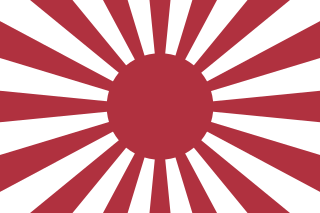
The Imperial Japanese Army (IJA) was the principal ground force of the Empire of Japan. Forming one of the military branches of the Imperial Japanese Armed Forces (IJAF), it was controlled by the Imperial Japanese Army General Staff Office and the Army Ministry, both of which were nominally subordinate to the Emperor of Japan, the supreme commander of IJAF. During the 20th century, an Inspectorate General of Aviation became the third agency with oversight of the IJA. At its height, the IJA was one of the most influential factions in the politics of Japan and was one of the most powerful armies in the world. The IJA was also notorious for committing numerous war crimes during the Second Sino-Japanese War and the Pacific War, such as the Nanjing Massacre and the Bataan Death March.
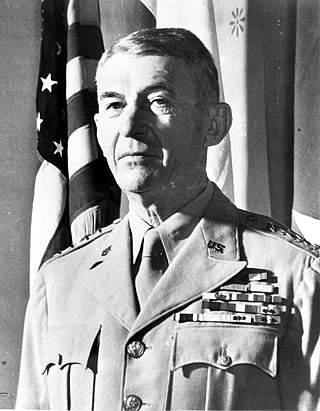
Walter Krueger was an American soldier and general officer in the first half of the 20th century. He commanded the Sixth United States Army in the South West Pacific Area during World War II. He rose from the rank of private to general in the United States Army.

The Battle of the Bismarck Sea took place in the South West Pacific Area (SWPA) during World War II when aircraft of the U.S. Fifth Air Force and the Royal Australian Air Force (RAAF) attacked a Japanese convoy carrying troops to Lae, New Guinea. Most of the Japanese task force was destroyed, and Japanese troop losses were heavy.

Vice Admiral Daniel Edward Barbey was an officer in the United States Navy who served in World War I and World War II. A graduate of the Naval Academy, he participated in the 1912 United States occupation of Nicaragua and the 1915 United States occupation of Veracruz. While serving with the War Plans Section of the Bureau of Navigation in Washington, D.C. between the World Wars, developed an interest in amphibious warfare. In 1940 he produced Fleet Training Publication 167 – Landing Operations Doctrine, United States Navy, which would become the Navy's "bible" of amphibious operations, and would remain in use throughout World War II.
The First Washington Conference, also known as the Arcadia Conference, was held in Washington, D.C., from December 22, 1941, to January 14, 1942. President Roosevelt of the United States and Prime Minister Churchill of the United Kingdom attended the conference, where they discussed a future United Nations.
The Yokusan Sonendan was an elite paramilitary youth branch of the Imperial Rule Assistance Association political party of wartime Empire of Japan established in January 1942, and based on the model of the German Sturmabteilung (stormtroopers).

The New Guinea campaign of the Pacific War lasted from January 1942 until the end of the war in August 1945. During the initial phase in early 1942, the Empire of Japan invaded the Territory of New Guinea on 23 January and Territory of Papua on 21 July and overran western New Guinea beginning on 29 March. During the second phase, lasting from late 1942 until the Japanese surrender, the Allies—consisting primarily of Australian forces—cleared the Japanese first from Papua, then New Guinea, and finally from the Dutch colony.

The Society for Military History is a United States–based international organization of scholars who research, write, and teach military history of all time periods and places. It includes naval history, air power history, and studies of technology, ideas, and homefronts. It publishes the quarterly refereed The Journal of Military History.
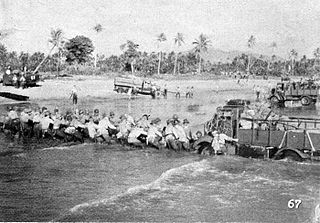
The Dutch East Indies campaign of 1941–1942 was the conquest of the Dutch East Indies by forces of the Empire of Japan in the early days of the Pacific campaign of World War II. Allied forces attempted unsuccessfully to defend the islands. The East Indies were targeted by the Japanese for their rich oil resources which would become a vital asset during the war. The campaign and subsequent three-and-a-half-year Japanese occupation was also a major factor in the end of Dutch colonial rule in the region.

The Battle of Driniumor River, also known as the Battle of Aitape, 10 July – 25 August 1944, was part of the Western New Guinea campaign of World War II. During the fighting, Japanese forces launched several attacks on United States forces on the Driniumor River, near Aitape in New Guinea, over the course of several weeks with the intention of retaking Aitape. After making some initial gains, the Japanese attack was contained and eventually turned back having suffered heavy casualties. The battle should not be confused with Operation Persecution, which included amphibious landings near Aitape in April 1944, or the Aitape–Wewak campaign, which began in November that year.

The Battle of Arawe was fought between Allied and Japanese forces during the New Britain campaign of World War II. The battle formed part of the Allied Operation Cartwheel and had the objective of serving as a diversion before a larger landing at Cape Gloucester in late December 1943. The Japanese military was expecting an Allied offensive in western New Britain and was reinforcing the region at the time of the Allied landing in the Arawe area on 15 December 1943. The Allies secured Arawe after about a month of intermittent fighting with the outnumbered Japanese force.

The Battle of Hollandia was an engagement between Allies of World War II and Japanese forces during World War II. The majority of the Allied force was provided by the United States, with the bulk of two United States Army infantry divisions being committed on the ground. Air and naval support consisted largely of U.S. assets, although Australia also provided air support during preliminary operations and a naval bombardment force.

The Landing at Aitape was a battle of the Western New Guinea campaign of World War II. American and Allied forces undertook an amphibious landing on 22 April 1944 at Aitape on northern coast of Papua New Guinea. The amphibious landing was undertaken simultaneously with the landings at Humboldt and Tanahmerah Bays to secure Hollandia to isolate the Japanese 18th Army at Wewak. Operations in the area to consolidate the landing continued until 4 May, although US and Japanese forces fought further actions in western New Guinea following a Japanese counter-offensive that lasted until early August 1944. Aitape was subsequently developed into an Allied base of operations and was used by Australian forces throughout late 1944 and into 1945 during the Aitape–Wewak campaign.
During World War II, Kansas was a major United States Army Air Forces (USAAF) training center for pilots and aircrews of USAAF fighters and bombers. Kansas was favored because it has excellent, year-round flying conditions. The sparsely populated land made ideal locations for gunnery, bombing, and training ranges.

The Japanese 18th Army was a field army of the Imperial Japanese Army during World War II.

The Battle of Attu, which took place on 11–30 May 1943, was a battle fought between forces of the United States, aided by Canadian reconnaissance and fighter-bomber support, and Japan on Attu Island off the coast of the Territory of Alaska as part of the Aleutian Islands campaign during the American Theater and the Pacific Theater. Attu is the only land battle in which Japanese and American forces fought in snowy conditions, in contrast with the tropical climate in the rest of the Pacific. The more than two-week battle ended when most of the Japanese defenders were killed in brutal hand-to-hand combat after a final banzai charge broke through American lines.
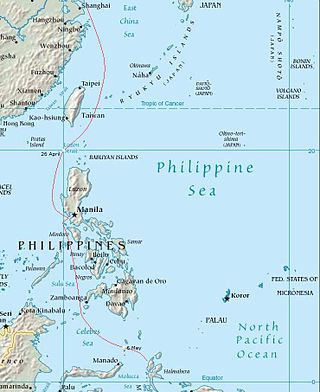
The Take-Ichi sendan was a Japanese convoy of World War II. The convoy left Shanghai on 17 April 1944, carrying two infantry divisions to reinforce Japan's defensive positions in the Philippines and western New Guinea. United States Navy (USN) submarines attacked the convoy on 26 April and 6 May, sinking four transports and killing more than 4,000 soldiers. These losses caused the convoy to be diverted to Halmahera, where the surviving soldiers and their equipment were unloaded.
The recorded military history of China extends from about 2200 BC to the present day. This history can be divided into the military history of China before 1912, when a revolution overthrew the imperial state, and the period of the Republic of China Army and the People's Liberation Army.
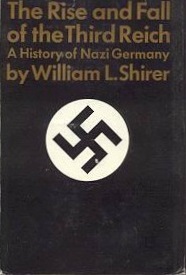
This is a bibliographyof works on World War II.















